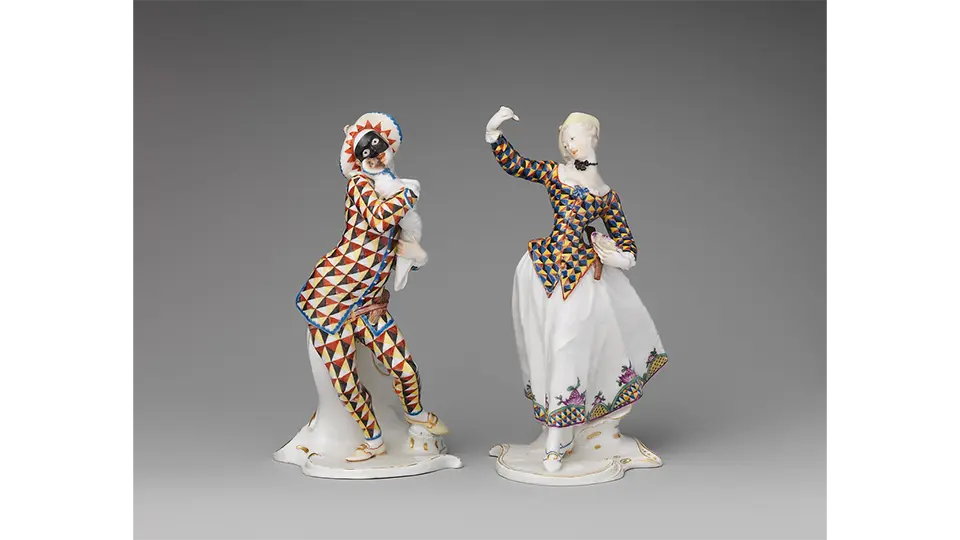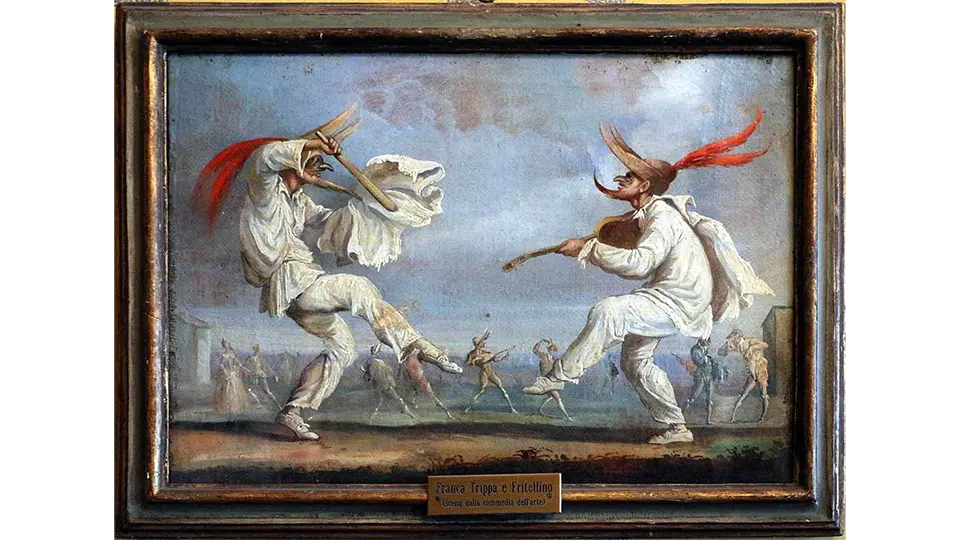Once Upon a Mattress
Activity — Character Building using Pantomime
About Pantomime
In Once Upon a Mattress, King Sextimus the Silent has been struck with a curse—one that has taken away his ability to speak. He must communicate using only gestures and facial expressions. His friend, the Jester, is able to understand him and interpret what he is saying for other characters and for the audience. Other times, when the King tries to communicate, the meaning of his message is lost, like when he speaks to Prince Dauntless in "Man to Man Talk."
The name for the King's form of communication is pantomime—but what is pantomime, and where is its place in the history of theater?
Pantomime's long history began with Commedia dell'Arte, a form of entertainment that began in 16th-century Italy. These performances, which involved dance, music, tumbling, and acrobatics, made their way across Europe and eventually to England in the 18th century, where pantomime took the form of classical stories set to music and told without the use of speech.
Over the next two centuries, the British Pantomime grew in popularity and scale. Many families even had Toy Theatres where they could reenact their favorite pantomimes at home. Folk tales from across the globe were turned into pantomime performances, and shows began to incorporate illusions, special effects, and even live animals. Today, Pantomime is still performed across the United Kingdom, reflecting stories that have been honed over hundreds of years. The art is a beloved staple of Christmastime celebrations for many families.
In the United States, when we hear the word pantomime, we tend to think of “mime”—telling a story through body motions, without using speech. While few American shows are done entirely in mime, many shows feature mimed scenes or interactions when characters are unable to use their voices. This is how King Sextimus communicates in Once Upon a Mattress, and while pantomime/mime is often played for comedic effect, it can also be used as an important plot device.
Activity Section
Part I: Think of a fairytale that you know well—well enough to tell the story to somebody else. In the boxes below, draw or write out the story’s beginning, middle, and end.
Part II: With a partner, practice telling your story in pantomime. You can use your body, your facial expressions, or even props, but not your voice! See if your partner can follow the story. Was it easy or difficult to understand? What was clear? What was confusing?
Part III: In front of the whole group or class, present your pantomime fairytale. See if the group can guess which one it is without you saying a word!

